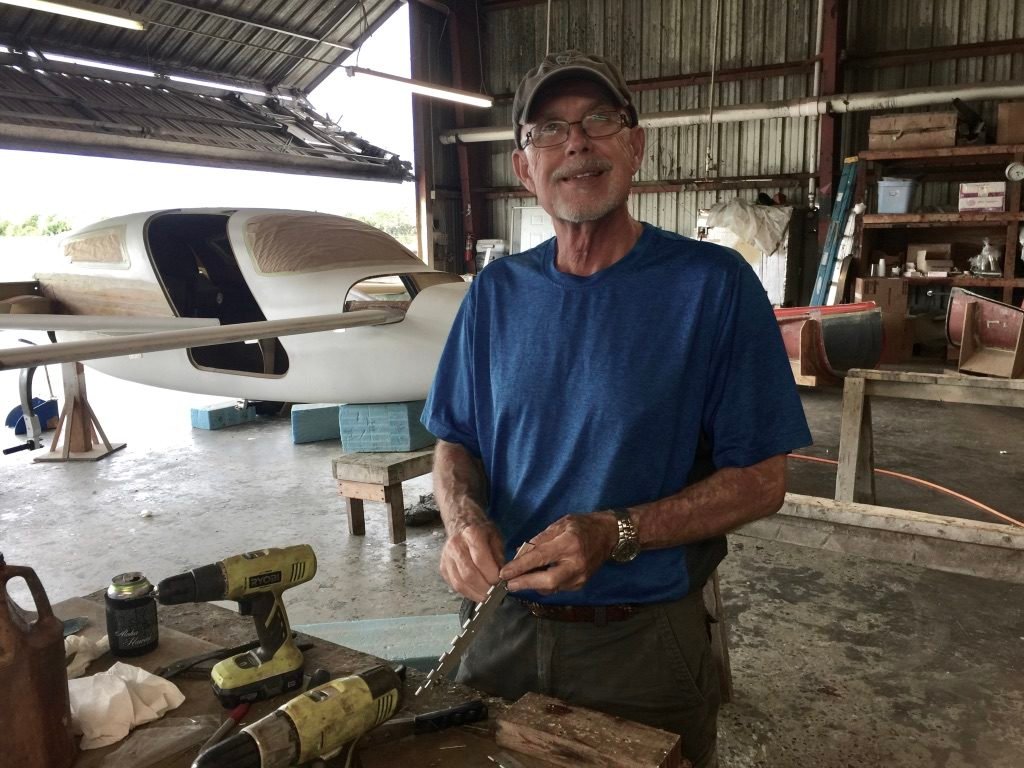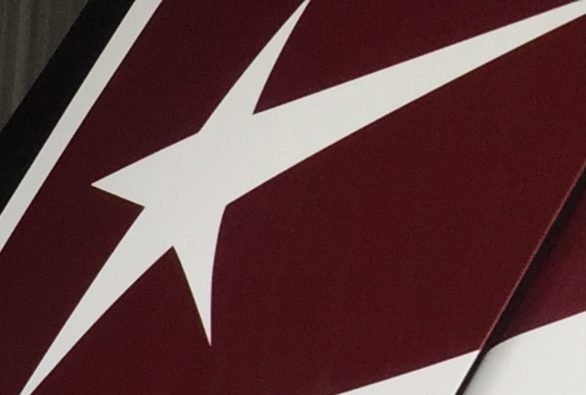This website describes how I came to build a V-Twin and how all of that unfolded. I discuss the head start program, my experiences at the factory, my decision to change my plans and complete the build at the factory, and how all of that progressed, the “Journey”, if you will.
Like most, I first learned of the existence of the V-Twin from the AOPA Magazine. I was intrigued. I already had built a beautiful Lancair Legacy which was an amazing airplane, but my wife and I were already thinking about building an airplane with four seats, instead of two. That way, we could share our love of aviation, and also take family and grand kids with us.
So after attending the next Oshkosh for an up close inspection, attending the Velocity Owners and Builders Association (VOBA) dinner there, and speaking to the Velocity salesman, John, several times, I was pretty sure it was the airplane for us.
So my next step was to fly down to the factory for a demo flight with owner Scott Swing. I also learned a lot from speaking with owner Duane Swing. I was still a little nervous about tackling such a big project, but also looking forward to it. So I rolled the dice, so to speak, and placed an order right after I had the check in my hand for the, now sold, Legacy.
If you are interested in a brief overview of the previous aircraft that I have owned, then click on any of the links below. One way or the other, these ownership experiences were formative along the way, and were a significant part of leading me to the V-Twin.
Along the way, I learned all about the ownership experience, such things as Annual Inspections, pitot-static checks, insurance, biennial flight reviews, and so on. I was already a pilot, but being an Air Force pilot, an airline pilot, or in a flying club is not the same as owning and operating a General Aviation airplane. As I always did a lot of the maintenance myself, I learned a lot along the way. It was fun.
Northrup T-38 Talon
Cessna 182
Beechcraft Travel Air (twin)
Beechcraft C55 Baron (twin)
Grumman Traveler
Lancair Legacy
While this website is devoted more to the “Journey” I took to complete this really big project, and not a build log per se, if you decide to peruse the various web pages pertaining to building the airplane, what makes my airplane unique (Ron’s Airplane), and so on, you will notice that I have included model numbers, serial numbers, links, etc. as I describe the tasks. I try not to leave you wondering, “Where did he get that part?”
So if you are interested in a lot of the nitty, gritty building details, then read on down this page where you will find links to the “Build Center” and the “Completion Center”.
For more information about “researching” the V-Twin, see the menu item More..
Before I continue with the story, here is a brief recap of my background: BS in Math/Computers with a minor in Economics, MS in Systems Management (thesis: Design of Glass Cockpits), 7 years as an Air Force pilot (during the Vietnam era), Instructor Pilot, and Flight Examiner, all in the T-38 Talon, 35 years as an Airline Pilot (B-737, B-727, DC-8, DC-10, B-777, B-747), and, finally, ownership of several GA airplanes (Cessna 182, Beechcraft Travel Air, Beechcraft Baron C55, Grumman Traveler, & Lancair Legacy).
So continuing with the journey, after completing the sales contract and sending a check, the first big event was to spend a couple of weeks in the Head Start program at the Velocity Factory.
Head Start Program
While I was there, I got to know Chad and Dave and appreciate their excellent work and extensive knowledge. After all, they are the ones who actually build the kits, and they have been doing it for a long time. With that in mind, I decided to stay a “little” longer. I ended staying for 4 months on this visit!

My original intent was to get the build started, get big items done where I might need an extra hand, then transport the airplane kit back to California, but I pivoted. I quickly figured out the Velocity Factory is the very best place to build the airplane. There is just too much easily accessible knowledge and assistance available.
Besides, the original plan was to build this airplane with the help of my grandson and my granddaughter. They were both enthusiastic about the project. Alas, their dad got a job offer that he couldn’t refuse, so the family moved 2,000+ miles away. So rather than take my time and enjoy building along side my grandson and granddaughter, my goal became more of a “get it done” mentality so that I could enjoy flying it, rather than taking my time and enjoying the build process. As I had built an airplane before, and assisted in building other kit planes, I decided to just plow full steam ahead and get ‘er done!
The big problem for me was how far the factory in Florida is from my home in California. That was a big challenge. I ended up doing multi-month visits, and I stayed in VRBO rentals. That was easy during the summer off season, difficult during the winter months.
My grand kids came down during their summer vacations and pitched in. They had a lot of fun, and I rented a condo by the beach for their visits. They got to enjoy the ocean, the club house, and the swimming pool, as well as, help out with airplane building.
From time to time, my wife would also join me. Of course, she would always arrive when the grandkids were there! 🙂
I rented cars at the Orlando airport. Luckily, there is a daily nonstop flight on Southwest between San Diego and Orlando.
So if you choose to build your airplane completely (more or less) at the factory, the basic process is to start in the Build Center where the majority of the Fiberglas and carbon fiber work is done. When you first arrive, the “fast build” airplane (the only way the V-Twin comes) is already sitting on its wheels, the fuselage halves are bonded together, all the Plexiglas is installed, elevators and ailerons are ready for mounting, and the vertical stab/rudder/tail cone is off the mold (but you still have to cut out, finish, and mount the rudder, as well as, install the tail cone).
You can visit their website for the complete list of Fast Build items.
So while that’s a really big head start, there is still a lot more to accomplish while in the Build Center, although none of it is rocket science. It just takes time. If you have any questions or need some help after the head start program ends, Chad and Dave are right there with free advice or they can help with the tasks (hourly fee), your call.
Things I did while working in the Build Center
Things I did while working in the Completion Center
So if you follow the above links, you’ll learn quite a bit of detail about the building process. It’s not “how to”. Instead, it’s documented mainly with pictures. Still, you can learn a lot, and I do add explanatory notes and links along the way.
I hope you enjoy it.

